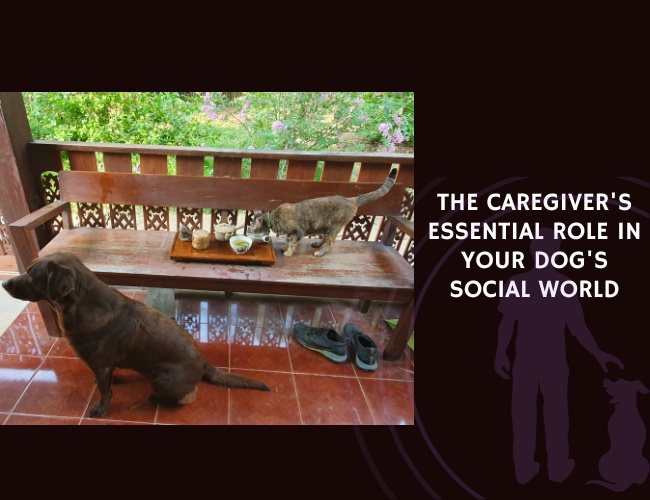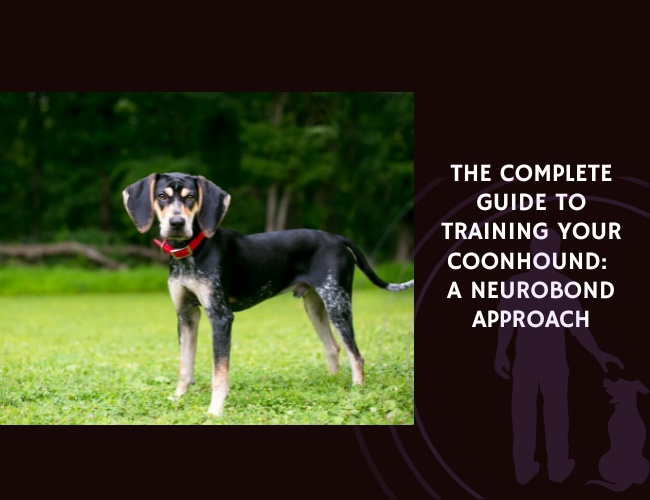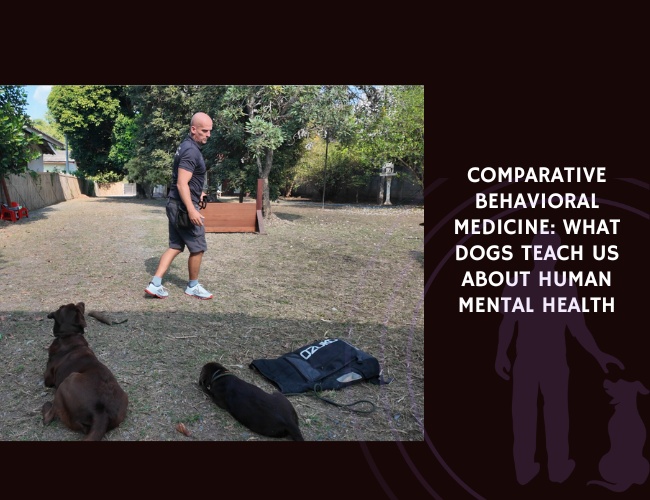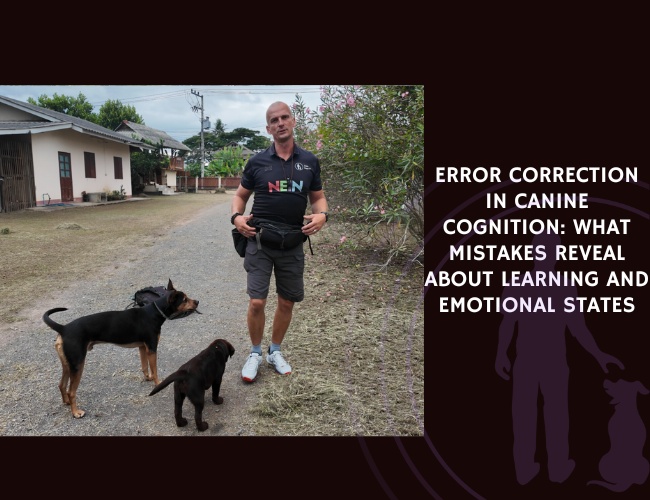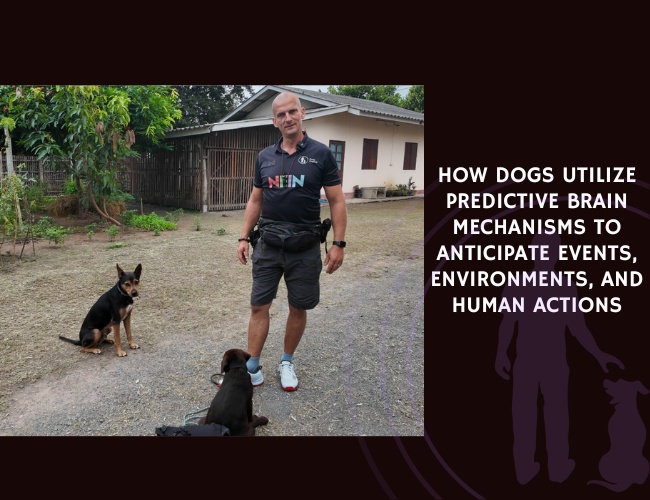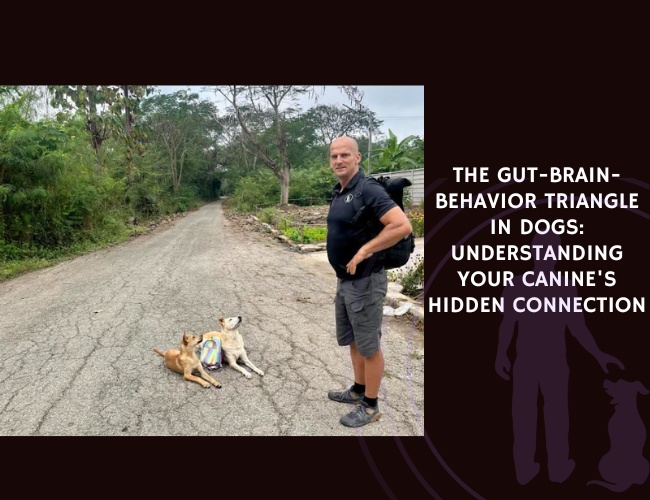Introduction
Have you ever wondered why some dogs seem perfectly content in multi-dog households while others struggle with rivalry or anxiety? Or why your presence can instantly calm a tense situation between your furry friends? The answer lies in understanding your profound role as a caregiver—not just as a provider of food and shelter, but as the emotional anchor and social architect of your dog’s world.
Recent research in canine behavior reveals that human caregivers play a far more complex role than previously understood. Your daily interactions, consistency, and emotional attunement directly influence not only how your dog bonds with you but also how they navigate relationships with other dogs. This fascinating interplay of attachment, neurobiology, and social learning creates a web of connections that can either support harmonious relationships or inadvertently foster dysfunction.
Let us guide you through the science and art of being an effective caregiver, helping you understand how your behavior shapes the intricate social dynamics in your home. Whether you’re managing a multi-dog household or simply want to deepen your bond with your single companion, this knowledge will transform how you approach your role in your dog’s life. 🐾
Understanding the Caregiver’s Impact
The Foundation of Trust
Your role as a caregiver extends far beyond meeting basic needs. You’re the architect of your dog’s emotional world, providing what researchers call a “secure base” from which they explore and interact. This concept, borrowed from human attachment theory, has proven remarkably applicable to our canine companions.
When you respond consistently to your dog’s needs—whether it’s a request for attention, signs of discomfort, or expressions of joy—you’re building a foundation of trust. This trust doesn’t just affect your relationship; it ripples outward, influencing how your dog perceives and interacts with their entire environment, including other dogs in the household.
Behavioral Traits That Define Effective Caregiving
Emotional Attunement: The most successful caregivers develop an almost intuitive understanding of their dog’s emotional states. You might notice subtle changes in body posture, variations in tail position, or shifts in vocal patterns. This attunement allows you to respond appropriately, providing comfort when needed or giving space when your dog seeks independence.
Predictability and Routine: Dogs thrive on predictability, and your consistent behavior provides the scaffolding for their daily lives. Regular feeding times, predictable walking schedules, and consistent responses to behaviors create a sense of safety that extends beyond the immediate interaction. This predictability becomes especially crucial in multi-dog households, where it helps establish and maintain peaceful social hierarchies.
Balanced Leadership: Effective caregiving involves neither authoritarian control nor permissive chaos. Instead, you provide gentle guidance that respects your dog’s autonomy while maintaining necessary boundaries. This balanced approach models appropriate social behavior that dogs often mirror in their interactions with each other.
Vocalization & Communication: The Language of Caregiving
Understanding How Your Response Shapes Communication
Every time you respond to your dog’s vocalizations or body language, you’re participating in a complex dialogue that strengthens your bond and teaches communication patterns. Recent studies have shown that dogs are remarkably adept at reading human emotional states, often adjusting their own behavior based on your mood and energy.
The Power of Mutual Gazing: One of the most profound discoveries in recent years involves the role of eye contact between dogs and their caregivers. When you and your dog engage in mutual gazing, both of your brains release oxytocin—the same hormone involved in human parent-child bonding. This biological response creates a positive feedback loop: the more you gaze lovingly at your dog, the stronger your bond becomes, and the more your dog seeks that connection.
Multi-Modal Communication
Your communication with your dog involves multiple channels simultaneously:
- Vocal Tone: Dogs are exquisitely sensitive to the emotional content of your voice. A warm, encouraging tone can boost confidence, while tension in your voice might increase anxiety.
- Body Language: Your posture, movements, and energy level communicate volumes. Relaxed shoulders and fluid movements signal safety, while tense body language can create stress.
- Touch: The way you pet, groom, or physically interact with your dog releases hormones that affect both of you. Gentle, purposeful touch increases oxytocin while potentially decreasing cortisol (stress hormone) levels.
Communication in Multi-Dog Dynamics
In households with multiple dogs, your communication style becomes even more critical. Dogs observe how you interact with each member of the pack, and these observations influence their own social behaviors. Showing favoritism or responding inconsistently to different dogs can create jealousy and competition, while balanced attention and fair treatment promote harmony.
Training & Education: Building Social Intelligence
The Caregiver as Social Teacher
Your role in training extends beyond teaching commands—you’re essentially providing your dog with the tools to navigate complex social situations. This social education is particularly crucial in multi-dog households, where dogs must learn to share resources, respect boundaries, and communicate effectively with their housemates.
Modeling Calm Behavior: Dogs are natural observers and often mirror their caregiver’s emotional state. When you remain calm during potentially stressful situations—like introducing a new dog or managing resource guarding—you’re teaching your dogs that these situations are manageable. This emotional regulation through modeling is one of the most powerful tools in your caregiving toolkit.
Consistency: The Cornerstone of Security
Consistent training and responses create what behaviorists call “predictable contingencies”—reliable cause-and-effect relationships that help dogs understand their world. This consistency is particularly important for:
- Establishing Boundaries: Clear, consistent rules about resources, space, and interactions help prevent conflicts between dogs
- Building Confidence: When dogs know what to expect, they feel more secure and are less likely to exhibit anxiety-based behaviors
- Promoting Fairness: Consistent treatment of all dogs in the household reduces jealousy and competition
The Neuroscience of Learning
Recent research has revealed fascinating insights into how dogs learn from their caregivers. The canine brain shows remarkable plasticity, adapting based on experiences and interactions. When you provide positive, consistent training experiences, you’re literally shaping your dog’s neural pathways, creating patterns that influence future behavior and social interactions.
Performance & Activities: Strengthening Bonds Through Shared Experiences
Creating Positive Associations
The activities you share with your dog do more than provide exercise and mental stimulation—they create positive associations that strengthen your bond and influence how your dog interacts with others. Whether it’s a morning walk, training session, or play time, these shared experiences release bonding hormones and create memories that shape your dog’s social template.
Individual vs. Group Activities: In multi-dog households, balancing individual attention with group activities is crucial. Individual time strengthens your unique bond with each dog, while group activities can promote positive associations between dogs. The key is ensuring that group activities don’t become competitive or stressful.
Enrichment and Social Development
Providing appropriate enrichment activities supports healthy social development:
- Puzzle Feeders: These can be used individually to prevent resource competition while providing mental stimulation
- Parallel Walking: Walking dogs side by side (rather than face-to-face interactions) promotes calm coexistence
- Structured Play: Supervised play sessions where you set the rules and pace help dogs learn appropriate play behavior
Nutritional Recommendations: Food as a Social Tool
The Social Dynamics of Feeding
How you manage feeding in your household profoundly affects social dynamics. Food is a primary resource for dogs, and your approach to feeding can either promote harmony or create tension.
Separate Feeding Stations: Creating distinct feeding areas for each dog reduces competition and allows relaxed eating. This separation isn’t just about preventing fights—it’s about creating positive associations with mealtime that extend to overall household harmony.
The Caregiver’s Role During Feeding: Your presence and behavior during feeding times send important messages. Calm, confident management of feeding routines reinforces your role as a trustworthy provider and reduces anxiety around resources.
Nutritional Support for Emotional Well-being
The connection between nutrition and behavior is increasingly recognized. Providing appropriate nutrition supports:
- Stable Energy Levels: Consistent blood sugar helps maintain emotional equilibrium
- Brain Health: Omega-3 fatty acids and other nutrients support cognitive function and emotional regulation
- Stress Management: Certain supplements can support dogs dealing with anxiety or social stress
Present. Perceptive. Foundational.
Your dog learns how to relate—by watching how you relate.
In every moment, you’re not just meeting needs. You’re shaping expectations. The tone you use, the timing of your touch, the way you manage conflict or calm—all of it becomes their template for trust, fairness, and safety.
You are not a bystander in their social world.
Dogs don’t magically “get along.” They sync to the energy, leadership, and cues you provide. Favoritism breeds friction. Inconsistency breeds confusion. But attuned caregiving—the kind that balances clarity with compassion—teaches harmony.



Multi-dog peace isn’t luck. It’s leadership.
Secure attachment isn’t built on control. It’s built on presence, predictability, and responsiveness. The more clearly you show up for each dog, the more clearly they show up for each other. You set the rhythm. They learn to dance.
Health Concerns: The Caregiver’s Vigilance
Recognizing Stress in Social Situations
As a caregiver, you’re often the first to notice when social dynamics are affecting your dog’s health. Chronic stress from problematic dog-dog relationships can manifest as:
- Physical Symptoms: Digestive issues, skin problems, or changes in appetite
- Behavioral Changes: Increased reactivity, withdrawal, or changes in sleep patterns
- Emotional Indicators: Excessive attention-seeking or avoidance behaviors
The Mind-Body Connection
Understanding the connection between social stress and physical health empowers you to intervene early. When dogs experience chronic social stress—whether from rivalry, insecurity, or inadequate caregiving—their bodies remain in a state of heightened arousal. This chronic stress response can compromise immune function, affect digestion, and create a cascade of health issues.
Cortisol and Health: Prolonged elevation of cortisol (the stress hormone) due to social stress can lead to various health problems. Your role in creating a calm, predictable environment directly impacts your dog’s physiological well-being.
Lifestyle & Environment: Creating Harmonious Spaces
Environmental Design for Social Success
The way you structure your living space significantly impacts dog-dog relationships. Thoughtful environmental design can prevent conflicts and promote positive interactions:
Resource Distribution: Placing water bowls, toys, and resting areas in multiple locations reduces competition and allows dogs to access resources without confrontation.
Safe Zones: Every dog needs a space where they can retreat and feel completely safe. As a caregiver, ensuring each dog has their own “sanctuary” space is crucial for emotional well-being.
Visual Barriers: Sometimes, the ability to break visual contact can defuse tension. Furniture arrangement, baby gates, or other barriers can provide dogs with options for managing their social interactions.
The Rhythm of Daily Life
Your daily routine creates the rhythm that governs your dogs’ lives. Predictable patterns for walks, feeding, play, and rest help dogs anticipate and prepare for transitions, reducing anxiety and promoting cooperation.
Senior Care: Adapting the Caregiver Role
Changing Dynamics with Age
As dogs age, their social needs and capabilities change. Senior dogs may become less tolerant of boisterous younger housemates, or previously confident dogs might develop anxiety. Your role as a caregiver must adapt to these changing needs:
Protecting Vulnerable Members: Older dogs may need protection from overly enthusiastic younger dogs. This might involve creating separate play times or ensuring the senior dog has easy access to quiet spaces.
Maintaining Social Connections: While senior dogs may need more rest, maintaining appropriate social connections remains important for cognitive health. Gentle, supervised interactions can provide stimulation without stress.
Health Monitoring in Multi-Dog Households
In multi-dog households, changes in social dynamics can sometimes signal health issues. A dog who suddenly becomes irritable with housemates might be experiencing pain or discomfort. Your observational skills become even more critical as dogs age.
The Science Behind the Bond: Understanding Attachment Dynamics
Oxytocin: The Bonding Hormone
The role of oxytocin in dog-human bonding has been extensively studied, revealing remarkable parallels to human parent-child relationships. When you engage in positive interactions with your dog—whether through petting, playing, or simply gazing into their eyes—both of your oxytocin levels increase. This hormonal response:
- Strengthens the emotional bond between you and your dog
- Reduces stress and anxiety
- Promotes prosocial behavior
- Creates a biological foundation for trust
Individual Differences in Attachment
Just as humans have different attachment styles, dogs show variation in how they bond with their caregivers. These differences can be influenced by:
Genetic Factors: Recent research has identified specific gene variants (like OXTR polymorphisms) that affect how dogs form attachments. Understanding that some dogs may be genetically predisposed to certain attachment patterns can help you adjust your caregiving approach.
Early Experiences: A dog’s early life experiences profoundly shape their ability to form secure attachments. Dogs who experienced inconsistent or inadequate care may require extra patience and consistency to develop secure bonds.
Caregiver Behavior: Your own attachment style and behavior patterns significantly influence your dog’s attachment security. Consistent, responsive caregiving promotes secure attachment, while unpredictable or anxious caregiving may create insecure attachment patterns.
Common Pitfalls: What Undermines Effective Caregiving
Anthropomorphism: The Double-Edged Sword
While understanding your dog’s emotional life is crucial, projecting human emotions and motivations onto dogs can create problems. Dogs have their own species-specific ways of experiencing and expressing emotions. Misinterpreting these can lead to:
- Inappropriate responses to normal dog behavior
- Missing important canine communication signals
- Creating anxiety by expecting human-like emotional responses
Inconsistent Reinforcement
Perhaps nothing undermines effective caregiving more than inconsistency. When rules, boundaries, and responses vary unpredictably, dogs cannot develop a clear understanding of expectations. This inconsistency can:
- Create anxiety and insecurity
- Foster competition between dogs
- Undermine training efforts
- Damage the trust foundation of your relationship
Favoritism in Multi-Dog Households
While it’s natural to have different relationships with different dogs, obvious favoritism can create serious social problems. Dogs are keenly aware of differential treatment, and perceived unfairness can lead to:
- Jealousy and resource guarding
- Increased aggression between dogs
- Anxiety in the “less favored” dog
- Breakdown of pack harmony
Conclusion: Is This Approach Right for You?
Understanding your profound influence on your dog’s social and emotional world is both empowering and sobering. As a caregiver, you hold the keys to creating either a harmonious, secure environment or one fraught with anxiety and conflict. The good news is that with knowledge, consistency, and emotional attunement, you can foster positive relationships not just between you and your dogs, but among the dogs themselves.
Consider these questions as you reflect on your caregiving role:
- Are you providing consistent, predictable responses that help your dogs feel secure?
- Do you recognize and respond appropriately to each dog’s individual needs while maintaining fairness?
- Are you creating an environment that supports positive social interactions?
- Do you model the calm, confident behavior you want to see in your dogs?
Remember, effective caregiving isn’t about perfection—it’s about awareness, consistency, and a willingness to adapt as you learn. Your dogs don’t need a perfect caregiver; they need a committed one who understands the profound impact of their role.
The journey of conscious caregiving transforms not just your dogs’ lives but your own. As you develop deeper attunement to your dogs’ needs and create an environment of security and trust, you’ll find that the bonds you forge—both between you and your dogs and among the dogs themselves—become sources of joy, comfort, and mutual enrichment.
Your role as a caregiver is perhaps the most important factor in your dogs’ quality of life. By embracing this responsibility with knowledge, compassion, and consistency, you create a world where every member of your pack can thrive. The science is clear: your behavior shapes their world. The question is: what kind of world will you create? 🧡

